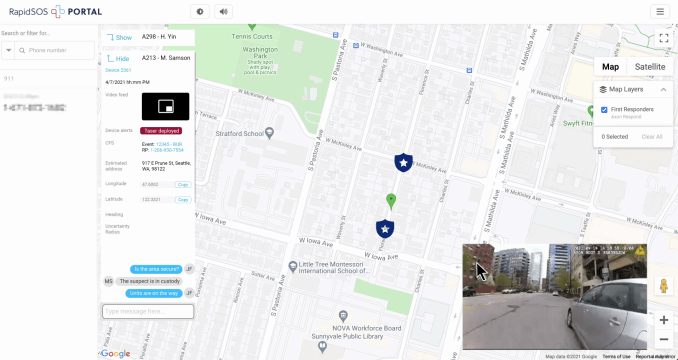
Every time an emergency responder or police officer responds to a 911 dispatch, they enter an unknown terrain. What’s the incident? Who’s involved? Is anyone dangerous or holding a weapon? Is someone injured and perhaps has an underlying health condition that the responders need to know about? As prominent news stories this week and over the last few years constantly remind us, having the right context while responding can turn a potential tragedy into a much more positive story.
RapidSOS is a startup I’ve been watching for years. The company raised an $85 million Series C round this February to bring real-time location information from all sorts of devices — from Apple and Android smartphones to Sirius XM satellite radios — into the hands of 911 call centers when users make an emergency call. Accurate location can help dispatchers send responders to exactly the right place, offering faster assistance and therefore saving lives.
The company announced this morning a new partnership with Axon, the company behind Taser, the electroshock weapon designed as a non-lethal alternative to traditional firearms, and a variety of body cams and other technologies for public safety officials. In recent years, Axon has increasingly emphasized a suite of cloud offerings that can fuse data from its devices with software to creates operations systems for public safety agencies.
Through the partnership, Axon will integrate the data that its devices generate such as body cam footage and Taser discharge alerts into RapidSOS’s Jurisdiction Review, which is used by dispatchers to place a location and relevant information from a caller a visual map. For instance, a dispatcher might now know the location of police or medical responders, and be able to update a 911 caller on the estimated time of arrival or whether they need help getting access to a location.
Likewise, RapidSOS’s location, medical, and other information that it pulls in from user devices during an emergency call will be sent to Axon Respond devices. Frontline responders will therefore have direct access to a 911 caller’s location information or medical information if they have a profile setup, without having to wait for a dispatcher to route those facts to them.
Josh Pepper, VP of product management at Axon, said “What we’re always trying to do is how can we get [first responders] the right information about the incident, the right information about the people involved, the right information about the location and all of the disposition of the units involved, as fast and as accurately as we can … so that they can have situational awareness of what’s happening.” RapidSOS’s data will augment other information streams, helping first responders make those critical split-second decisions.
Michael Martin, CEO and co-foudner of RapidSOS, said “for the first time now, your smartphone, your 911 responder and the police officer in the field can all simultaneously and transparently share data with each other.”
In tech, we are used to having comprehensive information about our products through data analytics. In the emergency space — even today — first responders can lack even the most rudimentary information like location when responding to a call. RapidSOS, Axon and a slew of other companies are trying to bridge that digital divide.

A UI mockup of how Axon’s information will display within RapidSOS’s Jurisdiction View. Image Credits: RapidSOS
This is the Jurisdiction View from RapidSOS’s platform, with a few elements added to mockup how Axon’s information will be integrated into the product. The two starred badges represent the locations of responding police officers in the field, converging on the location (green pin) of a 911 caller. In the bottom-right corner, a live body cam feed from a police officer can be routed straight to a 911 dispatcher, giving them a real-time look at what is transpiring on the ground. Meanwhile in the info box to the left, we can see that a Taser weapon was fired (noted under “Device Alerts”) and the 911 dispatcher can text to the responding officer directly through the platform.
The companies said the partnership will bear fruit this year as both platforms integrate the data streams into their respective products.













